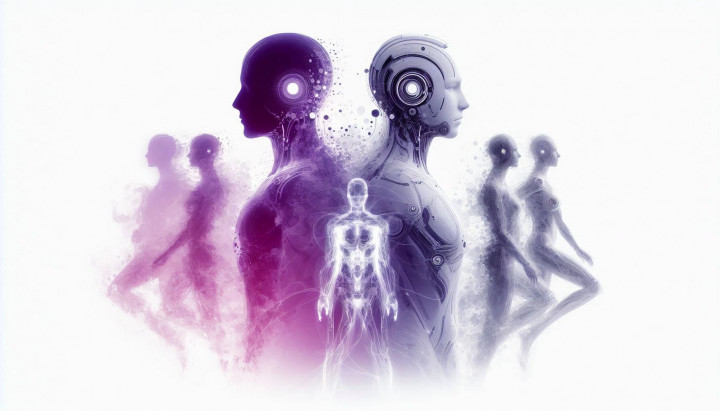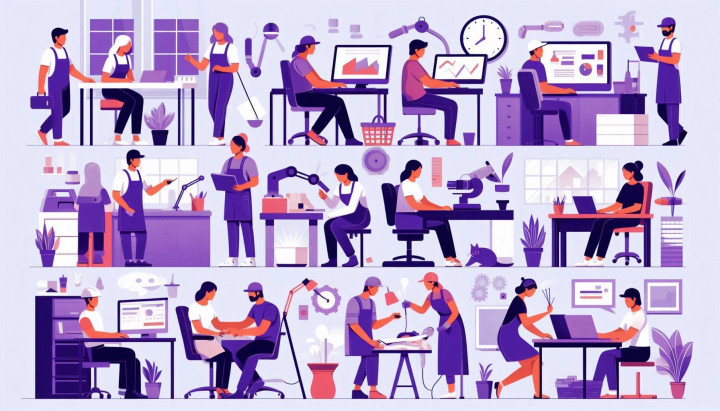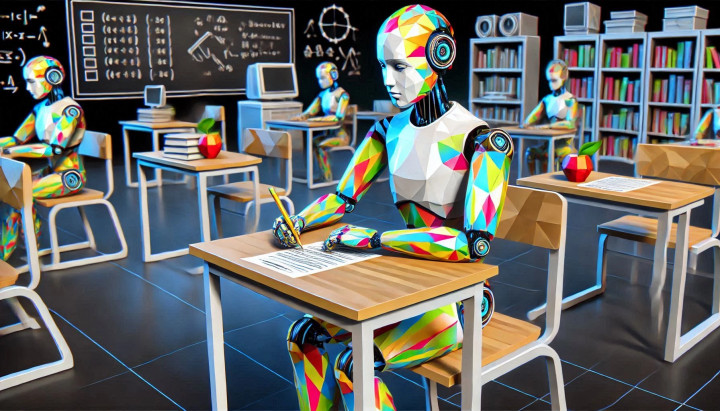The Humanoid Robots
Tesla's Optimus robot can now fold laundry. Figure AI's Figure 01 can brew a cup of coffee after a simple verbal request. These are not scenes from a science fiction movie; they are the reality of 2024. The humanoid robotics revolution is at our doorstep, poised to fundamentally reshape our understanding of work, productivity, and technology itself.

In this article, I present the fascinating world of humanoid robotics: I explore its technological foundations, assess its significance and potential, and discuss the challenges that engineers and society already face. I explain why the era of humanoids has truly arrived, highlight the breakthroughs that made it possible, and map out the economic and social impacts we are experiencing today.
A Brief History: From Ancient Dreams to Modern Reality
The desire to create an artificial being in our own image—one that can perform tasks for us—is as old as civilization itself. The bronze giant Talos from Greek mythology, who protected the island of Crete, and the musical automatons of the brilliant medieval Islamic engineer Al-Jazari are early manifestations of this ancient dream. Even Leonardo da Vinci designed a mechanical, programmable robotic knight in the late 15th century.
However, the true story of modern humanoid robotics begins in the second half of the 20th century. The first major milestone was WABOT-1, developed at Japan's Waseda University in 1973. This robot was capable of simple bipedal locomotion, grasping objects, and basic communication, proving that the theory could be put into practice.
The real breakthrough that captured global attention came in 2000 with Honda's ASIMO. ASIMO was the first robot to walk, run, and climb stairs with impressive dynamism. Although its movements were still confined to highly controlled laboratory conditions, ASIMO demonstrated the feasibility of stable, bipedal locomotion. It inspired an entire generation of researchers and engineers, laying the groundwork for many of today's advancements.
The next catalyst for progress was born from disaster. The 2011 Fukushima nuclear accident starkly revealed that specialized robots were ineffective in a hazardous, unstructured environment designed for humans. In response, the U.S. Defense Advanced Research Projects Agency (DARPA) launched the DARPA Robotics Challenge in 2015. The competition's goal was to spur the development of robots capable of performing complex tasks (like driving a vehicle, clearing debris, or turning a valve) in a disaster zone. This challenge dramatically accelerated research into robust humanoid robots that could operate in the real world.
The Core Promise of Humanoid Robotics:
Universality
Before we proceed, it's crucial to define what a humanoid robot is. It is an anthropomorphic robot—one with a human-like shape and structure—whose primary purpose is to operate effectively within physical environments and with tools designed for people.
And herein lies the technology's greatest promise. The industrial robots used today, such as the welding arms in car factories, are incredibly efficient but rigidly specialized. They can perform only one pre-programmed task flawlessly, and their environment must be adapted to them: they are enclosed in safety cages, and parts must be positioned with millimeter precision.
In stark contrast, the greatest advantage of humanoid robots is universality. Because their body plan—two legs, two arms, hands, and a head with sensors—mimics the human form, they can, in principle, perform any physical task a human can. This leads to a key conclusion: with humanoid robots, the machine adapts to the world, not the other way around.
A humanoid robot can navigate stairs, open doors, move through narrow corridors, and use a screwdriver designed for a human hand. Because of this, there is no need for costly and complex overhauls of our existing factories, warehouses, hospitals, or even our homes. The robot can simply be integrated into existing workflows, dramatically reducing the cost and complexity of its adoption.
The 'Embodied Intelligence' Challenge: Why Did the Breakthrough Take So Long?
If the concept is so promising, the question naturally arises: why are we only now, in the 2020s, seeing the first truly viable prototypes? The answer lies in the extraordinary complexity of both hardware and software—a challenge we can call the problem of "embodied intelligence."
-
The Complexity of Physical Realization:
-
Balance and Locomotion: Dynamic bipedal locomotion is an extremely difficult physics and computational problem, often compared to the "inverted pendulum problem." The robot must constantly adjust its posture hundreds of times per second to avoid falling while moving across varied terrain or carrying objects.
-
Manipulation and Fine Motor Skills: The human hand is a biomechanical marvel with over 20 degrees of freedom. Replicating its complexity and sensitivity is a monumental challenge. A robot must be able to distinguish between the delicate touch needed for an egg and the firm grip required for a metal bolt, which demands sophisticated force and torque sensors and precise control algorithms.
-
-
The Challenge of Perception and Understanding Reality:
-
It's not enough for a humanoid robot to "see" the world with cameras and LiDAR sensors; it must interpret it. It needs to recognize objects (a chair, a table, a tool), estimate their distance and material properties, and, most importantly, understand the contextual relationships between them (e.g., the cup is on the table, the tool is in the box). This field, combining computer vision, 3D mapping, and sensor fusion, is incredibly computationally intensive.
-
-
The Constraints of Computation and Power:
-
All the tasks mentioned above—motion coordination, sensor data processing, decision-making—require massive computational power in real-time. This "super-brain" must be packed into a compact, human-sized body, powered by a battery for an entire work shift, and all while being effectively cooled to prevent overheating. This triad of constraints—size, energy, and heat—was a seemingly insurmountable technological barrier for decades. The breakthrough finally came with the miniaturization and increasing efficiency of AI chips (GPUs and TPUs) developed for the mobile and data center industries.
-
How a Humanoid Robot 'Thinks'
The "soul" of a modern humanoid robot is its artificial intelligence, which operates in a continuous loop known as the Sense-Plan-Act model:
-
SENSE: The robot continuously gathers data about its environment and its own state using a suite of sensors: cameras and LiDAR for 3D mapping, inertial measurement units for balance, and force-torque sensors in its joints.
-
PLAN: This is the most complex phase, where the AI "thinks."
-
World Model: From the sensor data, the AI builds an internal digital model of its surroundings, identifying obstacles and objects.
-
Goal Interpretation: When the robot receives a command like, "Please take that water bottle to the table," Large Language Models (LLMs) help it understand the complex, natural-language request and break it down into concrete, actionable goals.
-
Action Plan: The AI then devises the necessary sequence of steps: walk to the bottle, extend the arm, grasp with appropriate force, lift, navigate to the table, and place it down. This process is continuously refined through techniques like Reinforcement Learning.
-
-
ACT: The AI translates the finalized plan into specific motor commands (e.g., "left leg lift 10 degrees, right arm extend 30 degrees..."), which the robot's body then executes.
This entire cycle repeats multiple times per second, allowing the robot to react dynamically to a changing environment, such as a person unexpectedly stepping into its path.
The Key Players in the Race
Now that we understand the significance of humanoid robotics and the technological hurdles that have been overcome, let's look at the key players in this emerging race and the fields where we can expect to see them deployed first.
The field of humanoid robotics has evolved into a high-stakes technological and business competition, with both agile startups and tech giants investing billions into development. Each of the leading players brings a unique strength to the table.
-
Boston Dynamics: The undisputed pioneers of the industry. For years, they have pushed the limits of dynamic motion with their Atlas robot, whose stunning acrobatic feats have become viral sensations. While long focused on research, their newest all-electric Atlas model is being designed for commercial application, starting with deployment in Hyundai's manufacturing plants.
-
Tesla: Elon Musk's company has entered the race with its Optimus robot. Their advantage lies in their vast experience with artificial intelligence (especially computer vision) developed for their self-driving cars, coupled with their expertise in high-volume, cost-effective manufacturing. Their goal is to create an affordable humanoid robot that can be mass-produced.
-
Figure AI: This startup burst onto the scene by forging a strategic partnership with OpenAI (the creators of ChatGPT). Their Figure 01 robot leverages state-of-the-art language and vision-language models, allowing it to understand complex tasks from human speech and learn new skills conversationally. Its investors include Microsoft, Nvidia, and Jeff Bezos.
-
Agility Robotics: This company is focused on pragmatism and logistics. Their robot, Digit, is specifically designed for warehouse environments, where it can move packages and stock shelves. Its distinctive reverse-jointed legs provide highly efficient locomotion. They are already being tested in Amazon's fulfillment centers.
-
Sanctuary AI: This Canadian firm places its primary focus on fine motor skills and highly complex hand manipulation. Their robot, Phoenix, boasts some of the most advanced hands in the industry, capable of performing tasks that require human-like dexterity and precision.
Practical Applications
Thanks to their universal nature, the number of potential applications for humanoid robots is virtually limitless. However, in the initial phase of deployment, they are most likely to appear in the following sectors:
-
Logistics and Warehousing: Sorting packages, moving boxes, stocking shelves, and assisting with "last-mile" delivery are ideal tasks for robots. These jobs are often physically demanding and repetitive.
-
Manufacturing: Assembly tasks that were previously too complex to automate can now fall within the purview of humanoids. They can perform quality control inspections or hand tools and parts to their human colleagues.
-
Healthcare and Eldercare: Due to demographic shifts toward aging populations, there is a growing need for assistance in care settings. Robots can reduce the physical strain on nurses (e.g., lifting and moving patients), help the elderly with daily chores at home, or perform disinfection tasks in hospitals.
-
Hazardous Environments: Humanoids can take over jobs that are dangerous for people. They can work in disaster relief (clearing rubble), perform maintenance in nuclear power plants, or operate in chemical factories.
-
Retail: In stores, they can restock shelves, conduct inventory checks, or assist customers in finding products.
The Societal and Human Impact of Humanoid Robots
Technological progress is never just about bits, motors, and algorithms; it is fundamentally about people and society. The imminent proliferation of humanoid robots raises profound ethical, legal, and social questions that we must confront now, at the dawn of this revolution. While the technology is awe-inspiring, its impact extends far beyond the walls of factories and warehouses.
-
Labor Market Transformation and Social Inequality: The most frequently cited concern is mass unemployment. While robots will undoubtedly take over repetitive, physically demanding, or dangerous jobs, the real challenge lies not merely in job displacement, but in managing the transition of the entire workforce. New professions will emerge (robot fleet manager, AI trainer, robot ethicist), but this will require a massive wave of reskilling and upskilling. The key question is: how do we ensure that the benefits of this technological leap are shared broadly and do not further deepen social inequalities?
-
Safety, Liability, and Vulnerability: Ensuring safety in a dynamic environment filled with people is paramount. But what happens when a robot makes a mistake and causes harm? Who is liable? The owner? The manufacturer? The AI software developer? The company that provided the training data? These questions lead us into uncharted legal territory. Furthermore, as networked devices, robots are potential targets for malicious actors who could use them for nefarious purposes such as espionage, sabotage, or even physical harm.
-
The "All-Seeing Eye" Dilemma: Privacy and Surveillance: Humanoid robots are, in essence, mobile data-gathering platforms. With cameras, microphones, and 3D sensors, they constantly scan and analyze their surroundings. This raises critical privacy concerns, especially when they are deployed in intimate spaces like homes or hospitals. Who has access to the data they collect? What is it used for? How do we prevent mass surveillance and the misuse of personal information?
-
Social and Psychological Impact: What will be the effect on human connection and the social fabric when caregiving—whether for the elderly or children—is partially or wholly outsourced to machines? This could lead to a "dehumanization" of care. How will we define our relationship with these entities? As tools, colleagues, or companions? The social integration of robots forces us to ask fundamental questions about empathy, attachment, and the very nature of human interaction.
The topics outlined above—from labor market shifts and legal liability to profound societal effects—are each profoundly complex. Given the gravity and importance of this subject, I will explore these issues in much greater detail in a dedicated follow-up article to give the challenges and potential solutions the space they deserve.
Conclusion and Outlook
Humanoid robotics is no longer a distant sci-fi promise; it is one of the most exciting technological revolutions of our time. The convergence of breakthroughs in artificial intelligence, sensor technology, and hardware manufacturing has brought us to a tipping point where decades-old dreams are becoming tangible reality.
As these machines become more capable and cost-effective, they will inevitably transform the labor market and the global economy. While they have the potential to unlock new levels of productivity and take over monotonous, dangerous, or physically taxing jobs, they also raise critical societal and ethical questions about the future of work, safety, and human-machine interaction.
The question is no longer if humanoid robots will become a part of our daily lives, but how soon—and how we prepare for this future.





